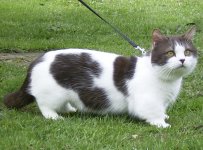SYDNEY - Love once the fate of the kitten, named Kimba. This type of Persian cat washing machine washed in a high speed.
The owner was shocked absurdly, when finished washing machine and opened the cover, see that poor kitten out. Thick white furry cat that looks wet, dizzy, and terrified.
"He suffered from shock. I do not think if he can survive the washing machine scouring," said the owner, Brendon Rogers, in Manly Vale, Sydney, Australia, quoted by Reuters on Friday (28/05/2010).
Four-month-old cat that seems to breathe out of breath and his eyes were in pain. This is caused by soapy water that tore during the "wash".
Presumably, these pet into the machine, when the owner was busy sorting choose clothes that will be cleaned.
The owner was shocked absurdly, when finished washing machine and opened the cover, see that poor kitten out. Thick white furry cat that looks wet, dizzy, and terrified.
"He suffered from shock. I do not think if he can survive the washing machine scouring," said the owner, Brendon Rogers, in Manly Vale, Sydney, Australia, quoted by Reuters on Friday (28/05/2010).
Four-month-old cat that seems to breathe out of breath and his eyes were in pain. This is caused by soapy water that tore during the "wash".
Presumably, these pet into the machine, when the owner was busy sorting choose clothes that will be cleaned.





















